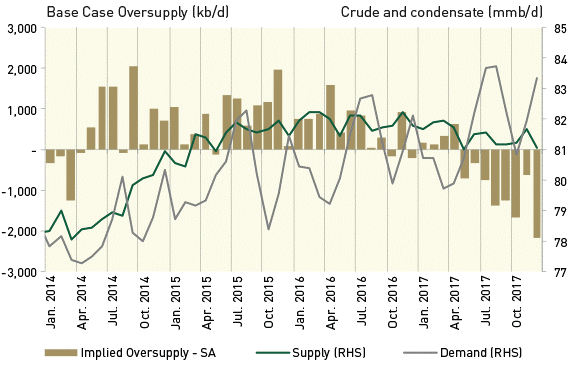By Anthony Tanner, CFA
SWP Guest Contributor
This most recent oil bust reflects the long run cyclical nature of commodity prices such as oil. And it is not that far removed from the last significant drop in oil prices in the late 1980’s.
One sign is the revival of restaurants tying the cost of executive meals to the price of a barrel of oil. In the 1980’s, several Houston restaurants garnered national attention for offering executive lunches for the price of a barrel of oil that day. Back then oil had dipped to as low as $9 per barrel. Recently, River Oaks restaurant Ouisie’s Table began pricing a special weekly three-course dinner on Wednesday nights for the days cost of a barrel of oil.
While the 1980’s oil bust brought about dire forecasts of the impending fall of several gulf coast state economies, including Texas, most survived just fine and emerged even stronger. The normal laws of supply and demand that influence commodity prices restored order to both oil prices and the broader energy related economy.
Approximately 1,200 rigs were taken offline in the United States over the last year or so, according to the International Energy Agency. Thanks to increase productivity of those wells in service, production has remained stubbornly high.
THOUGHTS ON SUPPLY & DEMAND:
- Energy companies continue to cut capital expenditures and delay new projects in an effort to reign in production and bring costs down.
- We would expect to see additional capacity come offline in the US as those high cost operators who cannot survive the downturn default.
- A popular view is that the energy sell-off that has gained speed in 2016 is driven increasingly by demand concerns, compared to the initial bust from $100+ prices that resulted from the initial and continued over-supply conditions that began in 2014.
- Many economists believe that absent a significant recession, the oil market can move to a more balanced supply / demand situation in the next 12-18 months.
Looking at the chart, we are now two years into a strong oversupply condition in the oil markets as supply has far outstripped demand (see the bar chart below from 4/14-7/16). This is not unexpected in a commodity driven market. Above average prices draw out both more producers and newer, more efficient ways to produce. Capital provided by investors attracted to the higher yields of the energy sector, and innovations such as cost effective fracking technologies helped enable the US to significantly expand production and become a swing producer in the world in the last few years.

Sources: IEA, JODI, HPDI, EIA, Rystad, WoodMac, Morgan Stanley Equity Research, and Morgan Stanley Commodity Research forecasts.
This is a big ship though that cannot be turned around (re reduced production) quickly. Even as oil prices have dropped by almost two thirds, supply has remained constant while demand has not caught up. In time though, the basic economic laws of supply and demand should prevail, as both the natural departure of unprofitable producers occurs and those remaining participants begin to regain some degree of both pricing power and production discipline.
So if you live in Houston, take advantage of the executive dinner specials while they last.
IMPORTANT DISCLOSURE INFORMATION
Past performance is no guarantee of future returns. It is not possible to invest directly in an index. Investing involves risk and possible loss of principal capital.
The views expressed in this content are as of the date indicated, and are subject to change based on market and other conditions. This content contains certain statements that may be deemed forward-looking statements. Please note that any such statements are not guarantees of any future performance and actual results or developments may differ materially from those projected. All information has been obtained from sources believed to be reliable, but its accuracy is not guaranteed. There is no representation or warranty as to the current accuracy, reliability or completeness of, nor liability for, decisions based on such information and it should not be relied on as such.
Please note that nothing in this content should be construed as an offer to sell or the solicitation of an offer to purchase an interest in any security or separate account. Nothing is intended to be, and you should not consider anything to be direct investment, accounting, tax or legal advice to any one investor. Consult with an accountant or attorney regarding individual accounting, tax or legal advice. No advice may be rendered, unless a client service agreement is in place.
All information has been obtained from the following sources: IEA, JODI, HPDI, EIA, Rystad, WoodMac, Morgan Stanley Equity Research, and Morgan Stanley Commodity Research forecasts via LORD ABBOTT. Each source is believed to be reliable, but its accuracy is not guaranteed. There is no representation or warranty as to the current accuracy, reliability or completeness of, nor liability for, decisions based on such information and it should not be relied on as such.